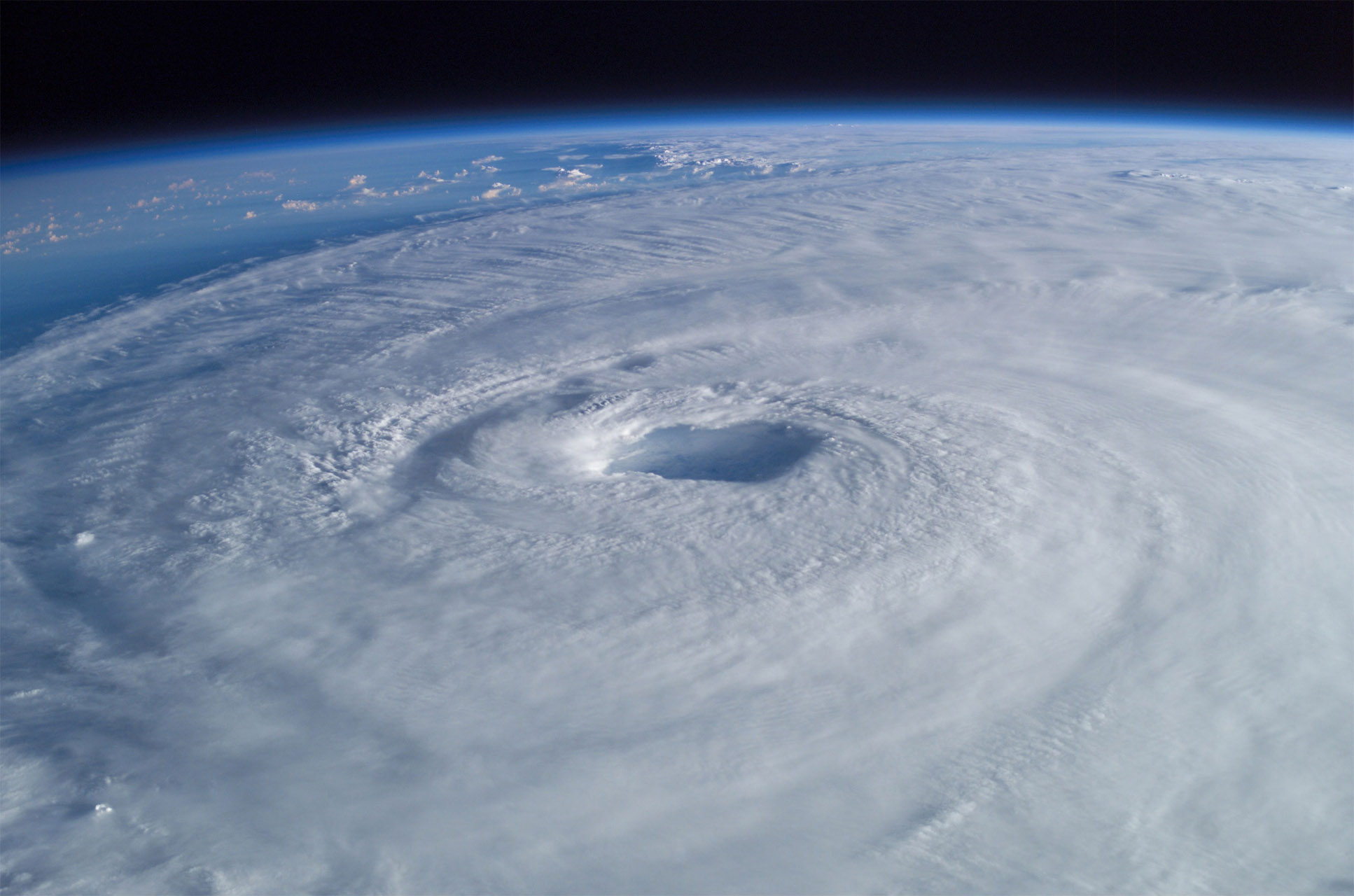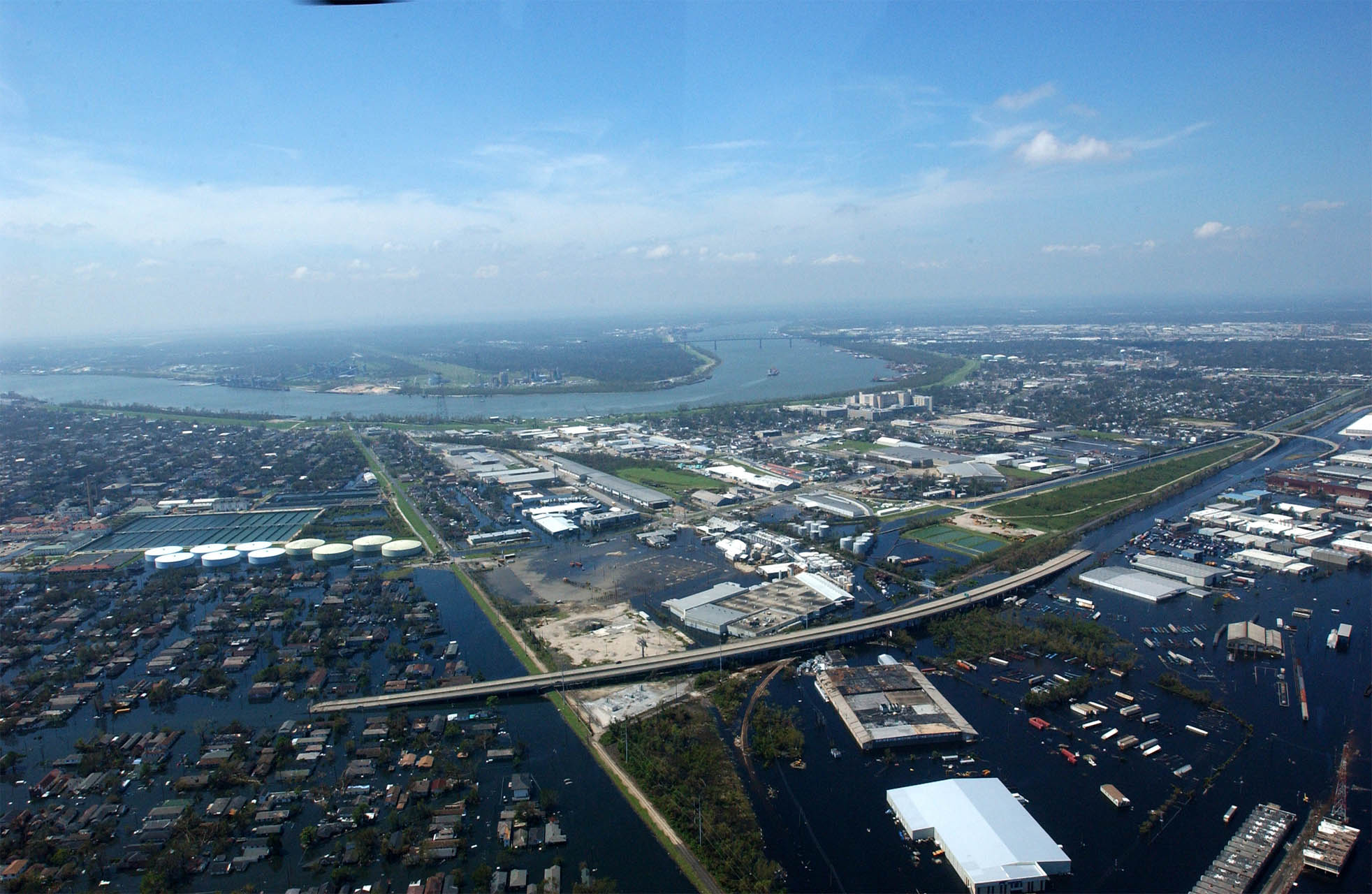Hurricanes are intense tropical storms with a strong rotating wind pattern. All hurricanes have a low pressure center. Hurricanes must have wind speeds in excess of 119km/h (74 mph) in order to be classified as hurricanes. Hurricanes are characterized by numerous thunderstorms that are accompanied by strong winds and rain. They are the most destructive storms on Earth.
A hurricane typically develops over the warm oceans of the tropics. It initially starts out as a group of thunderstorms that gradually begin to circulate around a low pressure system. In the northern hemisphere, this results in a characteristic counterclockwise pattern due to the Coriolis effect. This storm gradually picks up energy from the water that it travels over; the stored energy in the warm water as it first evaporates and then condenses acts as the energy source for future storm development. Such a storm is known as a tropical depression as long as its wind speed does not exceed 61 km/h (38 mph). If the storm continues to gain in intensity and achieves a wind speed between 61 and 119 km/h (i.e. 38–74 mph), it becomes known as a tropical storm. The storm finally achieves hurricane status when it achieves sustained wind speeds in excess of 119 km/h (74 mph).
The rotating structure of a hurricane is characterized by a prominent physical feature known as the eye of the hurricane. The eye is the calm center of a hurricane.
The relative intensity of a hurricane is categorized by a chart known as the Saffir-Simpson Scale.
| Saffir-Simpson Scale | ||||
| Hurricane Category | Pressure (mb or hPa) | Wind Speed | Damage | |
| km/h | mph | |||
| 1 | ≥ 980 | 119–153 | 74–95 | minimal |
| 2 | 965–979 | 154–177 | 96–110 | moderate |
| 3 | 945–964 | 178–209 | 111–130 | extensive |
| 4 | 920–944 | 210–250 | 131–155 | extreme |
| 5 | <920 | >250 | >155 | catastrophic |
A hurricane begins to lose its intensity after landfall. This is because it has lost its main source of energy: the heat stored in the warm waters of the tropics.
Hurricane: This word dates from 1555 and is based on the Spanish word huracan. The Spanish adopted this word from the Taíno people, natives of the Caribbean, who gave the name of Huracan to the god of storms.
What’s in a Name?
Hurricanes are known as typhoons in the western North Pacific. In India and Australia, they are known as cyclones.
Tracking Hurricane Katrina
On August 23, 2005, a tropical depression began to form 300 km (185 miles) off the Bahamas. In two days, this tropical depression would morph itself into Hurricane Katrina, the costliest disaster in the history of the United States.
- Click on each date in the chart below in order to track the development of Hurricane Katrina.
| The Development of Hurricane Katrina | ||
| Date (2005) | Description | Location |
| Aug. 23 | tropical depression | south of the Bahamas |
| Aug. 24 | tropical storm | over the Bahamas |
| Aug. 25 | hurricane (category 1) | landfall near Miami, Florida |
| Aug. 26 | hurricane (category 2) | Gulf of Mexico |
| Aug. 27 | hurricane (category 3) | Gulf of Mexico |
| Aug. 28 | hurricane (category 5) | Gulf of Mexico |
| Aug. 29 | hurricane (category 3) | landfall near Buras-Triumph, Louisiana |
| Aug. 30 | tropical depression | near Clarksville, Tennessee |
By the time Katrina had passed, over 1,800 people had died, and 80% of New Orleans was flooded. Total property damage due to the storm was an estimated $81 billion dollars.



